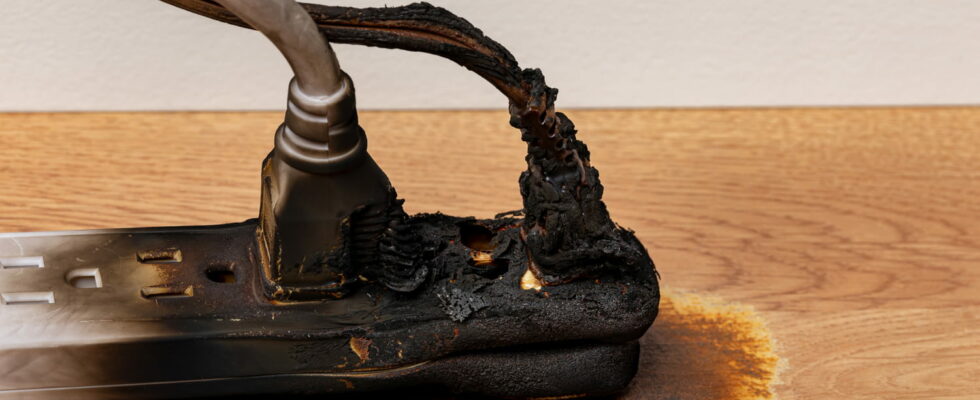Electricians know this well: you should avoid plugging well-known and widely used devices into a power strip.
You can never have enough electrical outlets at home… Hence the success of power strips, these small boxes that multiply the connections without requiring the intervention of an electrician to install new outlets at home. However, beware of bad habits: some everyday equipment has no place on a power strip! While some dangers are relatively well-known because they are regularly recalled, others are less so. However, electricians also have some very unpleasant surprises when checking an electrical installation or for work on the electrical panel.
First basic rule: check that the total power of the connected devices does not exceed that supported by the power strip. This maximum power must be indicated on the packaging of the power strip. A faulty, worn or dusty power strip goes straight into the trash, the risk of short circuit or electrocution being maximum. Also avoid any proximity to curtains or a confined space.
Once this is well known, there remains the danger of connecting incompatible devices. These devices are much more numerous than one would think! Here is a small top 15 and the explanations:
- Vacuum cleaners: their intense electrical demand may cause the circuit breaker to trip.
- Microwave ovens: they use too much energy and can overload the electrical circuit.
- Coffee makers: they seem harmless but they are also very energy-hungry. It is best to unplug them systematically after use.
- Hair dryers, curling irons, straighteners: heat sources, they can overheat the power strip. The same goes for kettles which consume a lot during the ultra-rapid temperature rise.
- Electric ovens: their power requires a dedicated outlet.
- Treadmills: their motors have high and constant consumption.
- Portable air conditioners: same thing, these now very widespread devices require a powerful and reliable power supply.
- Electric radiators and convectors: very energy-intensive, they give off a lot of heat.
- Dishwashers: their water and electricity consumption requires a direct connection.
- Irons: like all heating appliances, they are big consumers of energy over short periods of time.
- Refrigerators: energy-intensive, they require an individual and permanent outlet.
- Water heaters: to heat water, they also need a lot of electricity and for a long time.
- Freezer: this is another power-hungry appliance that requires a stable and continuous connection.
- Washing machines and dryers: their powerful motors and long cycles justify a direct connection.
All these devices have in common a high power consumption, especially when operating simultaneously. Caution requires checking the power of each device and ensuring that the total remains within the limits allowed by the power strip.
Electricity is unforgiving: the National Observatory for Electrical Safety (ONSE) records more than 200,000 declarations of domestic fires to insurance companies each year. And more than a quarter of them are said to have an electrical cause. It is therefore better to be careful and know how to make choices. Unplugging an appliance only takes a few seconds but can save you from a very bad situation…
